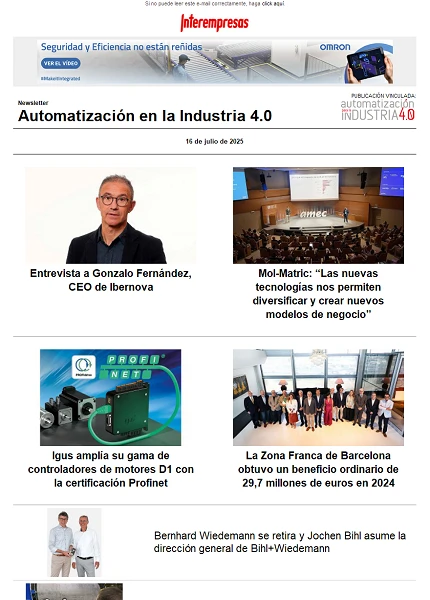Alineación apropiada en máquinas de medir por coordenadas
INTRODUCCIÓN
Tal tipo de inspección se realiza en general en Máquinas de Medir por Coordenadas (MMC). La actividad de fijar la pieza en el campo de trabajo supone sujetarla con útiles dedicados (calibres) o elementos de fijación de uso general, anulando sus seis grados de libertad de movimiento. La alineación se realiza sobre la pieza fijada, que consiste en definir el sistema de referencia idóneo de la pieza mediante sus características representativas.
En otras palabras: alinear significa poner la pieza en posición y la orientación “privilegiadas”, conforme con el deseo del autor de su diseño, expresado en el plano de la pieza o en su modelo informático. Los resultados de la inspección dependen de la calidad del proceso de alineación, y de ahí deriva la importancia de esta fase de trabajo metrológico.
Para el desarrollo correcto de la fase de alineación y la inspección en general es necesario realizar previamente un estudio de la pieza.
1. ESTUDIO DE LA PIEZA
En un proceso analítico, utilizando la muestra como modelo real y su plano como modelo virtual, el metrólogo tratará de entender la composición de formas que constituyen la pieza.
Forma característica (FC).
atributo fundamental de cada pieza, es la combinación racional de formas elementales que permite distinguir las piezas, la que asegura la funcionalidad de la pieza en un conjunto.
Forma tecnológica (FT).
Es la que surge tras el proceso de desarrollo de la tecnología de fabricación, y que adjunta los requisitos de funcionalidad y factibilidad. En ésta, las formas elementales sencillas se combinan con formas elementales complejas para evitar zonas críticas acumuladoras de tensiones (generadas por dificultades de expulsión, temperaturas, presiones, cargas, etc.) durante el proceso de fabricación o en funcionamiento. El incumplimiento de alguno de estos requisitos conduce a formas atecnológicas.
 |
 |
| Fig. 1.- Formas atecnológicas | Forma tecnológica |
Formas elementales sencillas (FELSEN).
Son aquellas zonas de la pieza que se materializan en elementos geométricos primitivos tales como prismas, pirámides, cilindros, conos, esferas, toros. Estas son las formas más habituales para alinear.
Formas elementales complejas (FELCOM).
Son las zonas delimitadas por curvas tridimensionales complejas, o definibles sólo mediante ecuaciones de grado elevado. Por lo general no son útiles para alinear, pero si son predominantes y con importancia funcional (helicoidales, paraboloides, etc.). También se pueden utilizar para alinear con la ayuda de un programa de medición apropiado (PC-DMIS, LIMA, HOLOS etc.).
 |
| fig. 2.- Formas elementales sencillas (FELSEN) y formas elementales comlejas (FELCOM) |
2. EVALUACIÓN DE LAS FORMAS
En un proceso analítico, cualquier pieza se puede descomponer en formas elementales sencillas y/o formas elementales complejas, tal que:
FT = S FELSEN(i) + S FELCOM(j)
Conocer la pieza como forma tecnológica significa poder describir, ubicar y orientar las formas presentes en la composición. En otras palabras, poder contestar para cada uno de sus elementos a las preguntas: ¿Cómo está? ¿Dónde se sitúa? ¿Cuál es su orientación?
Las FELSEN se pueden describir con las dimensiones específicas, ubicar mediante las coordenadas de algún punto representativo y orientar utilizando los ángulos.

En el modelo virtual de la pieza - expresión de su forma tecnológica como plano sobre papel o modelo informático 3D - esta información definitoria se expresa mediante cotas. Tanto las coordenadas como los ángulos no son más que derivados de la dimensión de tipo longitud, entendida como distancia entre dos puntos representativos, sea de la misma o de distintas características (es habitual el uso del término genérico característica para nombrar formas primitivas, sin más detalles).
En la evaluación de muchas cotas con la MMC se procede simplemente a la lectura de coordenadas y, dado que éstas se evalúan a lo largo de los ejes del sistema, es fundamental que el sistema de referencia sea el apropiado. Lo mismo ocurre en la inspección de las FELCOM, donde se practica una evaluación discreta mediante coordenadas de puntos tomados sobre estas zonas. El problema es aún más complejo, debido a que en la recogida de puntos discretos no se puede conseguir una compensación correcta del radio de la punta de exploración si el movimiento de aproximación no se realiza en dirección perpendicular a la superficie
3. MÉTODOS PARA ALINEAR
Existen normas, tales como ISO 5459 o ANSI Y14.5.1, que indican cómo deben alinearse las piezas industriales. La aplicación correcta de estas normas facilita mucho el proceso de inspección. Estas normas asignan al diseñador de la pieza la responsabilidad de definir el sistema de referencia, mediante características representativas y restricciones sobre éstas, que se van a reflejar en el plano mediante una simbología cuya lectura e interpretación permiten al metrólogo reproducir el razonamiento del diseñador.

|
| Fig. 4.- Simbología relacionada con la alineación |
A menudo la alineación de la pieza deriva del conjunto al que pertenece para asegurar un fácil montaje, evitar interferencias o asegurar la funcionalidad. Algunos componentes o subconjuntos del automóvil se inspeccionan en un sistema de referencia, que puede tener el origen fuera del volumen de trabajo de la MMC.
Siempre y cuando exista en el plano alguna información sobre la alineación, se procede a alinear respetando las exigencias marcadas. Si en el plano falta la información relativa a la alineación, se recomienda utilizar alguno de los métodos presentados a continuación.
3.1. Método plano, línea, punto
- Escoger la característica más representativa de la pieza para definir el datum primarium [A]. Con este fin, se pueden utilizar planos definidos por varios puntos o ejes de cilindros. Al obtener así el primer eje (Z) la pieza pierde tres grados de libertad: dos giros (Rx, Ry) y una traslación (Tz). Obsérvese que el incumplimiento de la exigencia de forma (planitud, cilindricidad) descalifica la característica para su uso en alineación. Tal ocurrencia debe ser comentada, con el beneficiario de la pieza antes de proseguir, con el fin de encontrar una solución alternativa
- Definir una dirección por varios puntos proyectada sobre el plano perpendicular al primer eje. Este será datum secundarium [B]. La imposición de esta dirección como segundo eje (X) determina la pérdida de otros dos grados de libertad (Rz y Ty) de la pieza. El incumplimiento de la exigencia de forma (rectitud) descalifica la característica para su uso en alineación
- Fijar en un punto representativo de la pieza (borde, centro de un círculo, etc.) el datum terciarium [C]. Con ello se bloquea el último grado de libertad, (Tx) de la pieza en inspección. La placa de la figura 5 sirve para ilustrar el uso de este método. Los seis grados de libertad están marcados con Tx, Ty, Tz (traslaciones) y Rx, Ry, Rz (giros).

|
| Fig. 5.- Bloqueo de los seis grados de libertad |
3.2 Método BESTFIT
- Identificar puntos representativos sobre la pieza en el sistema de referencia de la MMC. Estos puntos suelen ser centros de taladros, intersección 3D entre ejes de cilindros o también resultado de la relación geométrica entre elementos medidos. Se requiere un mínimo de 4 puntos, pero con más puntos el resultado final mejora.
- Editar la matriz de coordenadas teóricas de los puntos medidos, respetando el orden de exploración
- Llamar al programa informático, capaz de calcular (relacionando las coordenadas reales con las teóricas) las traslaciones y los giros necesarios para generar el sistema de referencia más acertado. El programa realiza iteraciones de cálculo hasta que la desviación estándar de los errores sea mínima.
Hay que hacer una observación al respecto: las coordenadas de los puntos medidos en el sistema resultante se aproximan a los valores teóricos con muy poca probabilidad de coincidir. Eventuales traslaciones para realizar una coincidencia empeoran las coordenadas de los demás puntos.
3.3 Método de alineación por comparación con el modelo informático
En los programas actuales de inspección de piezas se dispone de potentes utilidades de alineación, capaces de alinear piezas con formas complejas mediante puntos medidos sobre la muestra. Es necesario disponer del modelo informático 3D de la pieza. En una analogía con BESTFIT es éste - el modelo informático – el que se relaciona con la muestra real, fijada en la MMC, para encontrar la alineación. La iteración actúa tanto en los cálculos como en la toma de puntos de apoyo. Se requiere un mínimo de 6 puntos, con distribución integradora, para conseguir una buena alineación. La complejidad del proceso no permite ahora entrar en más detalles.Precauciones generales a tener en cuenta
- En la identificación de características que sirven para la alineación, procurar tomar puntos en movimiento de aproximación perpendicular a la superficie
- En la alineación por un plano, definido en 3 niveles, asegurarse de que la pieza queda fijada en una posición tal que este plano teórico sea paralelo a uno de los planos de proyección de la máquina de medir
- Verificar la validez de la alineación después de cada transformación gráfica, midiendo los elementos de referencia
- Al finalizar con éxito la fase de alineación, hay que guardar bajo nombre seguro el sistema correcto.
4. ¿ES POSIBLE ALINEAR POR SÓLO TRES PUNTOS?
Encontrar respuesta a esta pregunta ha sido uno de los retos del grupo de trabajo del Laboratorio de Metrología de Asacmm Centro Tecnológico. Esta preocupación surgió de necesidades prácticas como:
- Inspección de tubos doblados, alineados por las coordenadas de los puntos de intersección entre los segmentos cilíndricos componentes;
- Inspección de subconjuntos de automoción, alineados por las coordenadas de los puntos de fijación de las mismas.
Se pretendía simular el comportamiento durante el montaje mediante la alineación, de forma que el primer punto montado cumpla las 3 coordenadas, el segundo punto se obliga a cumplir sólo 2 coordenadas (montaje en orificio alargado) y el tercer punto se obliga a cumplir sólo una de las coordenadas (montaje en orificio mayor). La figura 6 reproduce esta situación.
En esta representación el punto A debe cumplir los valores de X, Y, Z previstos, el punto B dispone de libertad en el cumplimiento de la coordenada Y, mientras que el punto C sólo tiene que cumplir la coordenada X.

|
| Fig. 6.- Fijación por tres puntos con distintos grados de libertad |
El uso del método BESTFIT o del método de alineación por comparación con el modelo informático no puede cumplir exigencias de trato diferencial para los puntos de interés. Fue esta la necesidad que dio impulso al desarrollo de un programa dedicado, bautizado A3P, capaz de solucionar problemas de alineación por solo 3 puntos. La abstracción matemática del problema conduce a dos soluciones. Resultó complicada la tarea de elegir la solución correcta. Esto es similar al estudio estático del sistema de barras, terminadas en tres esferas, como se ve en la representación esquemática de la figura 7.
El extremo A del sistema de barras es una articulación esférica, que dispone de tres giros y tiene los tres traslados bloqueados. La esfera del extremo B descarga su peso en un prisma “V” orientado a lo largo del eje X. De esta forma el extremo B se obliga a cumplir las coordenadas Y más Z y dispone de libertad de traslación a lo largo del eje X. El extremo con la esfera C descansa sobre la placa base y se obliga a cumplir solo la coordenada en Z. Se puede imaginar que girando el sistema alrededor del eje que forman los centros de las esferas A y B resultan dos posiciones de equilibrio (una marcada con trazos) para el extremo C. Aunque las dos cumplen la altura Z, sólo una resultará con valores en X e Y próximos a lo previsto.

|
| Fig. 7.- Equilibrio estático con dos soluciones |
Un proceso lógico similar está implementado en el programa A3P, escrito en “Tutor for Windows”. Este programa permite la introducción interactiva de las coordenadas teóricas de los puntos, después la medición de los puntos reales y, seguidamente, realiza el proceso de cálculo que ofrece:
- Información sobre la desviación de las distancias entre los tres puntos reales respecto a las distancias teóricas;
- Información sobre el error de posición de los puntos segundo y tercero (el primero siempre coincide);
- Sistema de referencia apropiado, en el cual el primer punto cumple las tres coordenadas, el segundo cumple dos coordenadas y el tercero solo una de las coordenadas propuestas.

Aplicación en inspección de tubos

Aplicación en inspección de conjunto de pieza
|
dy ("TRZ = ",TRZ," ROZX = ",ROZX) dy (" ") dy("Se constatan estas deformaciones:") dy("DAB = ",DAB," DAC = ",DAC," DBC = ",DBC) dy("Se consiguen estos errores de posición:") dy("EPA = ",EPA," EPB = ",EPB," EPC = ",EPC) if ((EPB lt U) AND (EPC lt U )) then dy("Pieza y alineación casi perfectas !!!") elsif ((EPB gt 250*U) OR (EPC gt 250*U)) then dy("No es una alineación apropiada !!!") end_if FORA: endstat end_program |
| Final de instrucciones en el programa fuente A3P |
5. COMENTARIOS
- Si las tres distancias entre los puntos participantes en el proceso resultan alargadas, tenemos una pieza con error en el cálculo del coeficiente de contracción;
- Si dos de las distancias reales son menores que las teóricas y la tercera es mayor, tenemos una pieza deformada, retorcida;
- El error de posición del tercer punto, entendido como el radio de la esfera que incluye el punto real y tiene como centro el punto teórico, es también un indicador sintético para expresar el grado de conformidad entre la pieza real y su modelo teórico.
6. PERSPECTIVAS
- Se propone seguir el desarrollo del programa para que sea capaz de analizar entre las coordenadas de varios puntos (no más de 9) cuáles son los tres puntos que ofrecen la alineación más acertada sobre la base del mínimo error de posición.
- Se propone intercomparación de resultados e intercambio de información con otras entidades metrológicas








